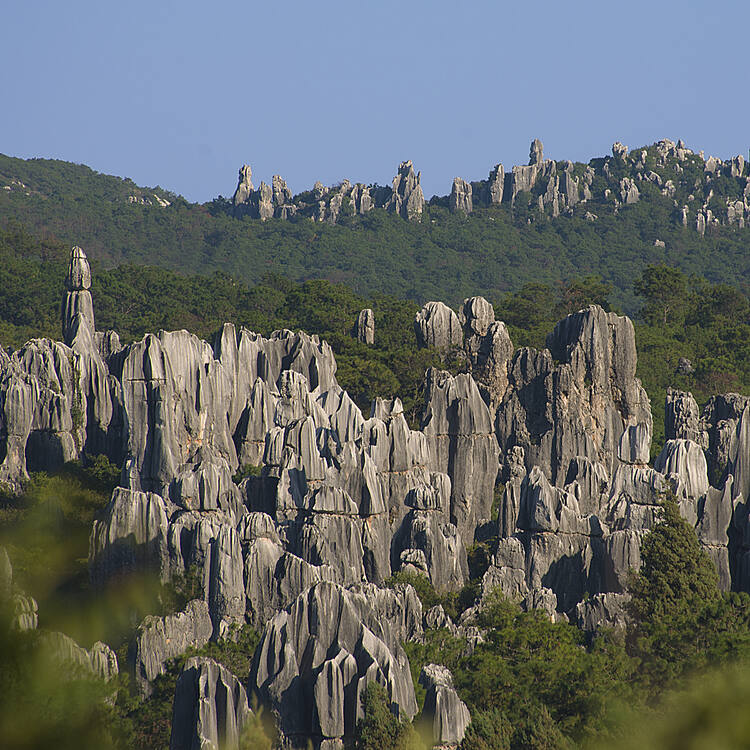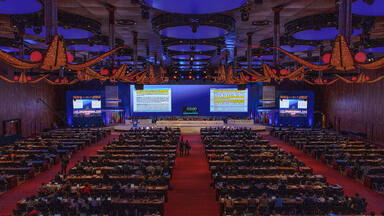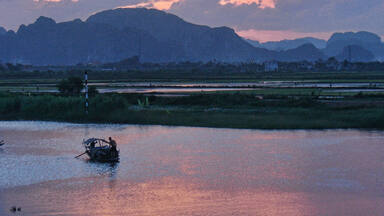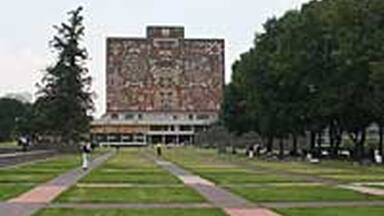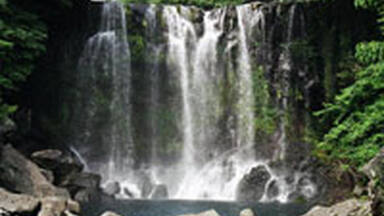South China Karst
South China Karst
South China Karst is one of the world’s most spectacular examples of humid tropical to subtropical karst landscapes. It is a serial site spread over the provinces of Guizhou, Guangxi, Yunnan and Chongqing and covers 97,125 hectares. It contains the most significant types of karst landforms, including tower karst, pinnacle karst and cone karst formations, along with other spectacular characteristics such as natural bridges, gorges and large cave systems. The stone forests of Shilin are considered superlative natural phenomena and a world reference. The cone and tower karsts of Libo, also considered the world reference site for these types of karst, form a distinctive and beautiful landscape. Wulong Karst has been inscribed for its giant dolines (sinkholes), natural bridges and caves.
Description is available under license CC-BY-SA IGO 3.0
Karst de Chine du Sud
La région du Karst de Chine du Sud représente l’un des plus spectaculaires exemples de paysages de karst humide tropical et subtropical. Ce site en série, réparti entre les provinces de Guizhou, Guangxi, Yunnan et Chongqing, s’étend sur une superficie de 97 125 ha. Il comprend les formes de reliefs karstiques les plus représentatives, notamment le karst à tourelles, le karst à pitons et le karst à pinacles ainsi que d’autres caractéristiques spectaculaires telles que des ponts naturels, des gorges et de vastes grottes. Les forêts de pierre de Shilin sont considérées comme des phénomènes naturels extraordinaires et de véritables références mondiales. Le karst à pitons et à tourelles de Libo, lui aussi considéré comme le site-référence mondial pour ce type de karst, offre un paysage très particulier d’une grande beauté. Le karst de Wulong a été inscrit pour ses dolines géantes, ses ponts naturels et ses cavernes.
Description is available under license CC-BY-SA IGO 3.0
中国南方喀斯特
中国南方喀斯特是世界上最壮观的湿热带-亚热带喀斯特景观之一,分布在贵州、广西、云南、重庆等省,占地面积共计97,125公顷。它包含了最重要的岩溶地貌类型,包括塔状岩溶,尖顶岩溶和锥形岩溶地层,以及其他壮观的特征,如天然桥梁,峡谷和大型洞穴系统。石林被公认为世界上最具参考价值的最高等级自然现象。荔波的锥体和塔状溶岩也被认为是这些岩溶类型的世界参考点,形成了独特而美丽的景观。武隆喀斯特因其巨大的落水洞、天然桥梁和洞窟而入选。
source: UNESCO/CPE
Description is available under license CC-BY-SA IGO 3.0
Karst de la China Meridional
La región del Karst de China Meridional constituye uno de los ejemplos más espectaculares de karst húmedo de las zonas tropical y subtropical. Se trata de un sitio seriado con componentes situados en cuatro provincias chinas (Guizhu, Guangxi, Yunán y Chongqing) que totaliza una superficie de 97.125 hectáreas. El sitio posee, en su conjunto, los relieves cársticos más representativos, especialmente en forma de torres, picachos y pináculos, y también otras formaciones geológicas características de gran espectacularidad, como puentes naturales, gargantas y grutas de grandes dimensiones. Los bosques de piedra de Shilin se consideran fenómenos naturales y extraordinarios y verdaderas referencias a nivel mundial. El karst de Libo, de picachos y pináculos, también se considera referencia mundial en su género y ofrece un paisaje muy particular de gran belleza. El karst de Wulong está inscrito en la Lista por sus torcas gigantescas, sus puentes naturales y sus cavernas.
source: UNESCO/CPE
Description is available under license CC-BY-SA IGO 3.0
中国南部カルスト
中国南部には約55万㎢のカルスト地帯が存在するといわれ、その中で、中国南方カルストは2007年に第1段階として石林(雲南省)、茘波(貴州省)、武隆(重慶市)の3ヵ所約480㎢が登録されていたが、今回は第2段階として、桂林(広西壮族自治区)の4ヵ所約500㎢が追加された。これらの地域では塔状カルストや円錐カルスト、石柱カルスト、カルスト台地など多様な地形が見られ、周囲の植生を伴う独特の美しい景観と、カルスト地形の複雑で様々な変化の過程を見ることができる。source: NFUAJ
Karstregio in Zuid-China
Deze regio in Zuid-China is een van de meest spectaculaire voorbeelden van een vochtig tropisch tot subtropisch karstlandschap. Het gebied is 97125 hectare groot, bestaand uit 12 plekken verspreid over de provincies Guizhou, Guangxi, Yunnan en Chongqing. De meest kenmerkende soorten karstformaties komen er voor zoals torens, pieken en kegels. Het stenen woud Shilin (steenbos) bij de stad Kunming bestaat uit bijzondere kalkstenen pieken en rotsen met uiteenlopende vormen en veranderende kleuren. De kegel- en torenvormige kalkstenen rotsen in Libo zijn wereldberoemd vanwege het prachtige landschap dat ze vormen. De karstregio kent nog andere spectaculaire kenmerken zoals natuurlijke bruggen, ravijnen en grote grotsystemen. Bijvoorbeeld in Wulong waar ook reuzen-dolines (komvormige verzakkingen) voorkomen.
Source: unesco.nl
Outstanding Universal Value
Brief synthesis
The huge karst area of South China is about 550,000 km2 in extent. The karst terrain displays a geomorphic transition as the terrain gradually descends about 2000 meters over 700 kilometers from the western Yunnan-Guizhou Plateau (averaging 2100 meters elevation) to the eastern Guangxi Basin (averaging 110 meters elevation). The region is recognized as the world’s type area for karst landform development in the humid tropics and subtropics.
The World Heritage Property of South China Karst is a serial property that includes seven karst clusters in four Provinces: Shilin Karst, Libo Karst, Wulong Karst, Guilin Karst, Shibing Karst, Jinfoshan Karst, and Huanjiang Karst. The total area is 97,125 hectares, with a buffer zone of 176,228 hectares. The property was inscribed in two phases.
Phase I inscribed in 2007, include three clusters totalling 47,588 hectares, with buffer zones totalling 98,428 hectares. The Shilin Karst component is in Yunnan province and contains stone forests with sculpted pinnacle columns and is considered the world reference site for pinnacle karst. Shilin Karst consists of two core areas surrounded by a common buffer zone. The area is 12,070 hectares with a buffer zone of 22,930 hectares. The buffer zone is designated as a UNESCO Geopark. The Libo Karst component is in Guizhou province and includes high conical karst peaks, intervening deep enclosed depressions (cockpits), sinking streams and long underground caves. The area is considered a world reference site for cone karst. The property consists of two core areas surrounded by a common buffer. The area is 29,518 hectares with a buffer zone of 43,498 hectares. One of the components is a national nature reserve. The Wulong Karst component is in Chongqing province and consists of high inland karst plateaux that have experienced considerable uplift. Its giant dolines and bridges are representative of South China’s tiankeng (giant collapse depression) landscapes, and provide the evidence for the history of one of the world’s great river systems, the Yangtze and its tributaries. The Wulong Karst component is a cluster of three core zones, each with a separate buffer zone. The areas total 6,000 hectares with buffer zones of 32,000 hectares.
Phase II inscribed in 2014 includes four clusters totaling 49,537 hectares, and buffer zones totaling 77,800 hectares. The Guilin Karst component in Guangxi province is located within Lijiang National Park and contains fenglin (tower) and fengcong (cone) karst formations. Guilin Karst is divided into two sections: the Putao Section with an area of 2,840 hectares and a buffer zone of 21,610 hectares and the Lijiang Section with an area of 22,544 hectares and a buffer zone of 23,070 hectares. The Shibing Karst component in Guizhou province includes dolomitic karst formations and is located within Wuyanghe National Park. Shibing Karst has an area of 10,280 hectares and a buffer zone of 18,015 hectares. The Jinfoshan Karst component is a unique karst table mountain surrounded by towering cliffs. Jinfoshan Karst is located in Chongqing province within the boundaries of the Jinfoshan National Nature Reserve and Jinfoshan National Park. The Jinfoshan component has an area of 6,744 hectares and a buffer zone of 10,675 hectares. The Huanjiang Karst component is a cone karst area located in Guangxi Province within the boundaries of the Mulun National Nature Reserve. The Huanjiang Component has an area of 7,129 hectares and a buffer zone of 4,430 hectares.
The South China Karst World Heritage property protects a diversity of spectacular and iconic continental karst landscapes, including tower karst (fenglin), pinnacle karst (shilin) and cone karst (fengcong), as well as other karst phenomena such as Tiankeng karst (giant dolines), table mountains and gorges. The property also includes many large cave systems with rich speleothem deposits. The karst features and geomorphological diversity of the South China Karst are widely recognized as among the best in the world. The region can be considered the global type-site for three karst landform styles: fenglin (tower karst), fengcong (cone karst), and shilin (stone forest or pinnacle karst).The landscape also retains most of its natural vegetation, which results in seasonal variations and adds to the outstanding aesthetic value of the area.
The property contains the most spectacular, scientifically significant and representative series of karst landforms and landscapes of South China from interior high plateau to lowland plains and constitutes the world’s premier example of humid tropical to subtropical karst: one of our planet’s great landscapes. It complements sites that are also present in neighbouring countries, including Viet Nam, where several World Heritage properties also exhibit karst formations.
Criterion (vii): The South China Karst World Heritage property includes spectacular karst features and landscapes, which are both exceptional phenomena, and of outstanding aesthetic quality. It includes the stone forests of Shilin, superlative natural phenomena which include the Naigu stone forest occurring on dolomitic limestone and the Suyishan stone forest arising from a lake, the remarkable fengcong and fenglin karsts of Libo, and the Wulong Karst, which includes giant collapse depressions, called Tiankeng, and exceptionally high natural bridges between them, with long stretches of deep unroofed caves.
It also includes Guilin, which displays spectacular tower karst and internationally acclaimed fenglin riverine landscapes, Shibing Karst, which has the best known example of subtropical fengcong karst in dolomite, deep gorges and spine-like hills often draped with cloud and mist, and Jinfoshan Karst, which is an isolated island long detached from the Yunnan-Guizhou plateau, surrounded by precipitous cliffs and punctured by ancient caves. Huanjiang Karst provides a natural extension to Libo Karst, contains outstanding fengcong features and is covered in almost pristine monsoon forest.
The property’s forest cover and natural vegetation is mainly intact, providing seasonal variation to the landscape and further enhancing the property’s very high aesthetic value. Intact forest cover also provides important habitat for rare and endangered species, and several components have very high biodiversity conservation value.
Criterion (viii): The South China Karst World Heritage property reveals the complex evolutionary history of one of the world’s most outstanding landscapes. Shilin and Libo are global reference areas for the karst features and landscapes that they exhibit. The stone forests of Shilin developed over 270 million years during four major geological time periods from the Permian to present, illustrating the episodic nature of the evolution of these karst features. Libo contains carbonate outcrops of different ages shaped over millions of years by erosive processes into impressive Fengcong and Fenglin karsts. Libo also contains a combination of numerous tall karst peaks, deep dolines, sinking streams and long river caves. Wulong represents high inland karst plateaus that have experienced considerable uplift, with giant dolines and bridges. Wulong's landscapes contain evidence for the history of one of the world's great river systems, the Yangtze and its tributaries. Huanjiang Karst is an extension of the Libo Karst component. Together the two sites provide an outstanding example of fengcong karst and also preserve and display a rich diversity of surface and underground karst features.
Guilin Karst is considered the best known example of continental fenglin and provides a perfect geomorphic expression of the end stage of karst evolution in South China. Guilin is a basin at a relatively low altitude and receives abundant allogenic (rainfed) water from surrounding hills, leading to a fluvial component that aids fenglin development, resulting in fenglin and fengcong karst side-by-side over a large area. Scientific study of karst development in the region has resulted in the generation of the ‘Guilin model’ of fengcong and fenglin karst evolution. Shibing Karst provides a spectacular fengcong landscape, which is also exceptional because it developed in relatively insoluble dolomite rocks. Shibing also contains a range of minor karst features including karren, tufa deposits and caves. Jinfoshan Karst is a unique karst table mountain surrounded by massive towering cliffs. It represents a piece of dissected plateau karst isolated from the Yunnan-Guizhou-Chonqing plateau by deep fluvial incision. An ancient planation surface remains on the summit, with an ancient weathering crust. Beneath the plateau surface are dismembered horizontal cave systems that appear at high altitude on cliff faces. Jinfoshan records the process of dissection of the high elevation karst plateau and contains evidence of the region’s intermittent uplift and karstification since the Cenozoic. It is a superlative type-site of a karst table mountain.
Integrity
The components of the serial property have within their boundaries all the necessary elements to demonstrate the natural beauty of karst landscapes. They also contain the scientific evidence required to reconstruct the geomorphic evolution of the diverse landforms and landscapes involved. The components are of adequate size and they have buffer zones which will help ensure the integrity of the earth science values, including tectonic, geomorphic and hydrological features. Some issues that face the property require policies and actions to be taken beyond the buffer zone boundaries. Challenges to the integrity of the property include human pressure both from people living in and/or around the property, and the pressures from visitors. However many measures have been and are being undertaken to address these issues. The natural environment and natural landscapes within the nominated properties are all well-maintained, in order to protect the features of Outstanding Universal Value, and the natural landscapes and processes that support them.
Protection and management requirements
The property is well managed, with management plans in place for each component, and which will be established and maintained for the serial property as a whole, and with effective involvement of stakeholders. Part of Libo Karst is within a national nature reserve. The buffer zone for Shilin is a UNESCO-recognised Global Geopark. Traditional management by minority peoples is an important element in management of a number of components, and the relationship between karst and the cultural identity and traditions of minority groups, including for example the Yi (Shilin), the Shui, Yao and Buyi (Libo) and Jinfoshan bamboo harvesters requires continued recognition and respect in site management. There are strong international networks in place to support continued research and management. Continued efforts are required to protect upstream catchments and their downstream and underground continuation to maintain water quality at a level that ensures the long term conservation of the property and its subterranean processes and ecosystems. Potential for further extension of the property requires development of a management framework for effective coordination between the different clusters.
Guilin, Shibing and Jinfoshan are national parks; Jinfoshan is a national nature reserve and Huanjiang is a national nature reserve and a Man and Biosphere Reserve. These components therefore benefit from a history of protection under relevant national and provincial laws and regulations and each of the Phase II component parts has a management plan. An integrated Management Plan of the South China Karst to support the sites added in 2014 has been developed.
Long term protection and management requirements for the component parts of the South China Karst include the need to ensure coordination throughout the serial site as a whole, through the establishment of a Protection and Management Coordination Committee for the South China Karst World Heritage; further enhance involvement of local communities and the maintenance of the traditional practices of the indigenous peoples concerned; strengthen whole catchment management to assure water quality is protected, and to avoid pollution; and strictly prevent negative impacts from tourism, agriculture and urban development activities from impacting the values of the property.
